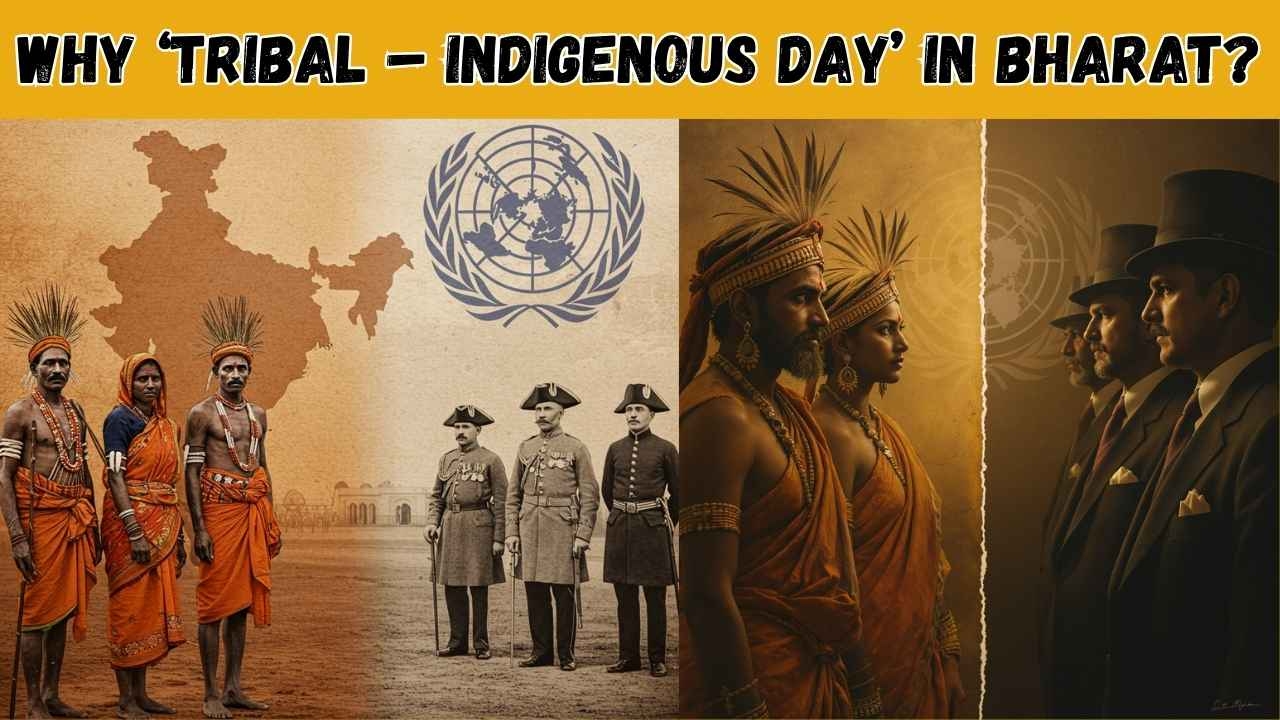Why ‘Tribal – Indigenous Day’ in Bharat?
Why does the celebration of 9 August for tribal communities raise questions about its true connection to Bharat?
Total Views |

When our Constitution was being drafted, there was near unanimity on the view that tribal communities should be given special status so that every citizen of the country could be included in the mainstream of society. This dream is now more than 70 years old, and little has been done in order to maintain its regard, with the BJP government in the centre and in the state being the government to be contributing the most to the development of the tribals.
The Double Engine The government of the BJP has aimed its policy at avoiding exploitation of natural resources, which has brought down the percentages of forced displacement of the tribal community, and there is a major drop in the poor health conditions of tribal people. Policies involving tribes for employment are also exacerbating social inclusion.
Moreover, the now Central Government has taken key steps to safeguard the tribal community’s rights and well-being. From social and cultural preservation to legal protections, it has implemented its policies in every section.
Tribal communities celebrating 9 August?
If we study the history of tribal communities celebrating 9 August, then it pulls us back to the colonial era. Why is it that tribal communities celebrate their day on 9 August? Does this day hold any moment of pride for the tribal groups? Or does it recall some meaningful historical awareness?
In truth, nothing of the sort exists. The declaration brought forward by the Working Group on Indigenous Populations (WGIP) applies only to those nations where, apart from the colonial or settler populations, original minority communities also live. Bharat, however, is a sovereign nation that regards all people living within its geographical boundaries as its own residents. Bharat supports this declaration merely because, under Article 46, there is no legal obligation on any nation to comply.
Now, let us consider a few facts from an anthropological perspective. Scientists now broadly agree that about 200 million years ago, there was only one landmass on Earth. The earliest signs of human development on this planet appeared in present-day Africa or Gondwanaland (which included Bharat).
Humans then migrated to other continents. Mutations caused by climate and ecology altered their physical features over time, leading to differences in facial structure and skin colour. Oppenheimer’s “Real Eve” theory also reinforces this concept, stating that the mitochondrial DNA of 98% of the world’s population comes from the same lineage. If we view this scientific fact in the Indian context, Max Müller’s Aryan–non-Aryan theory collapses on its own.
The widespread presence of the Sanskrit language also dismantles the notion that Aryan and Dravidian cultures developed in entirely separate forms. If we weigh all these facts against the belief held by some tribal communities that they are the original inhabitants while others are invaders, we see that it is precisely this mindset that is holding these communities back. This debate has been ongoing for years without pause. Alongside it, the struggle that tribal groups wish to pursue has also become perpetual.
Moving a step further from this scale of thought, one gets caught in a web of words. In English, the term “native” defines original inhabitants, while the word “tribal” clearly conveys the sense of belonging to a tribe. The Hindi term “Adivasi” appears closer to the meaning of “native” than to “tribal” itself. At the very least, it does not accurately reflect the identity of tribes. Unfortunately, nowadays the term 'Adivasi' is casually used for all groups residing in forest areas. The resulting confusion is destructive — it divides not only society but also the state and the nation.
Conclusion
There is no doubt that the most creative vision and culture of human civilisation are preserved in the tribal communities in an unbroken form. But the endless, unproductive debates about being Adivasi, Moolnivasi (original inhabitant), or Vanvasi (forest dweller) must now come to an end. These futile discussions need to be completely removed from the collective mind. Only then will these groups be able to march in step with the inherent dynamism of human civilisation.
The date of 9 August will continue to bear witness to a history that the tribal groups of our country never desired. In states like Chhattisgarh, Jharkhand, Odisha, Telangana, and the Northeastern states, this issue is even more significant because tribal groups form the majority of the population there. If they wish to give their identity and sense of self a proper direction, they must free themselves from this meaningless debate and from ideologies that divide society.
Article by

Kewali Kabir Jain
Journalism Student at Makhanlal Chaturvedi National University of Journalism and Communication

